A walk through time: The past is present in historical Palm Beach buildings and landmarks
- Oops!Something went wrong.Please try again later.
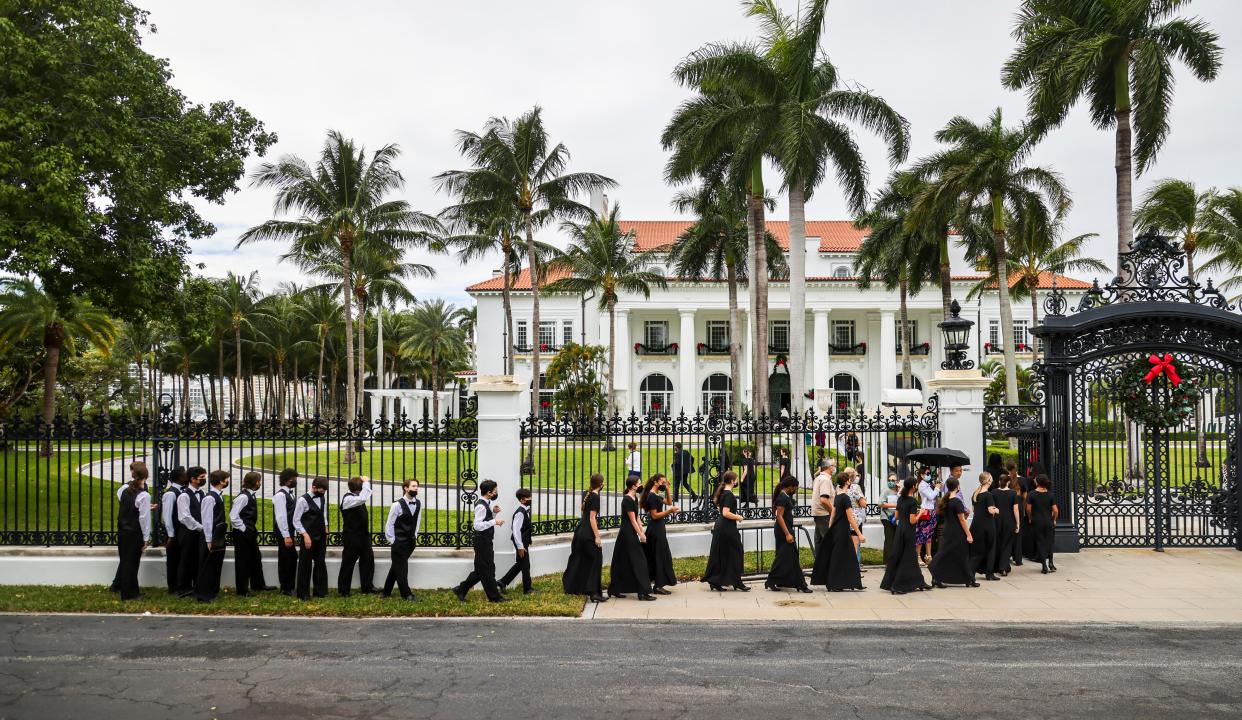
Part of the charm of Palm Beach is its constant reinvention. That ambition is visible on our historic tour of the town.
Roughly arranged from north to south, each of these sites can be appreciated from the street, the Lake Trail or both. Some will beckon you to come in and explore.
Annie’s Dock: Fishing, boating and a snack
Annie’s Dock, built in 1929, once stood at Palm Beach’s northern tip.
It was a popular gathering spot that attracted visitors arriving on foot and by boat. The wooden pier was named after Anne Eggleston, a dockmaster who lived in a rickety white-cypress house on the dock. The town of Palm Beach hired her in 1946 for $1 a year to run the dock and live there rent-free.
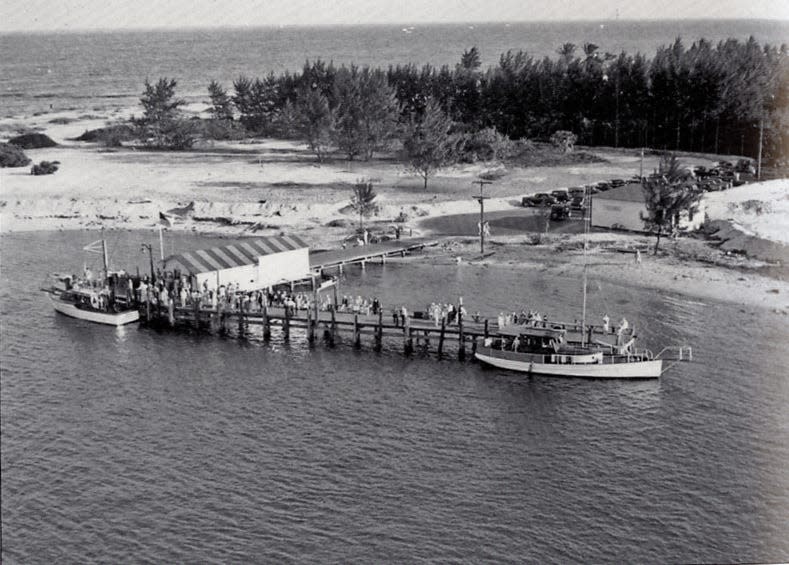
Children flocked to Annie’s Dock to play and swim. Boaters and fishermen stopped to put gas in their boats and to buy bait, soft drinks and Eggleston’s homemade cakes, chili, meatloaf and sandwiches. The town closed the business after neighbors complained.
In 1985, the house was torn down to make way for a new concrete dock, also known as Annie’s Dock, just north of where North Ocean Boulevard and East Inlet Drive meet.
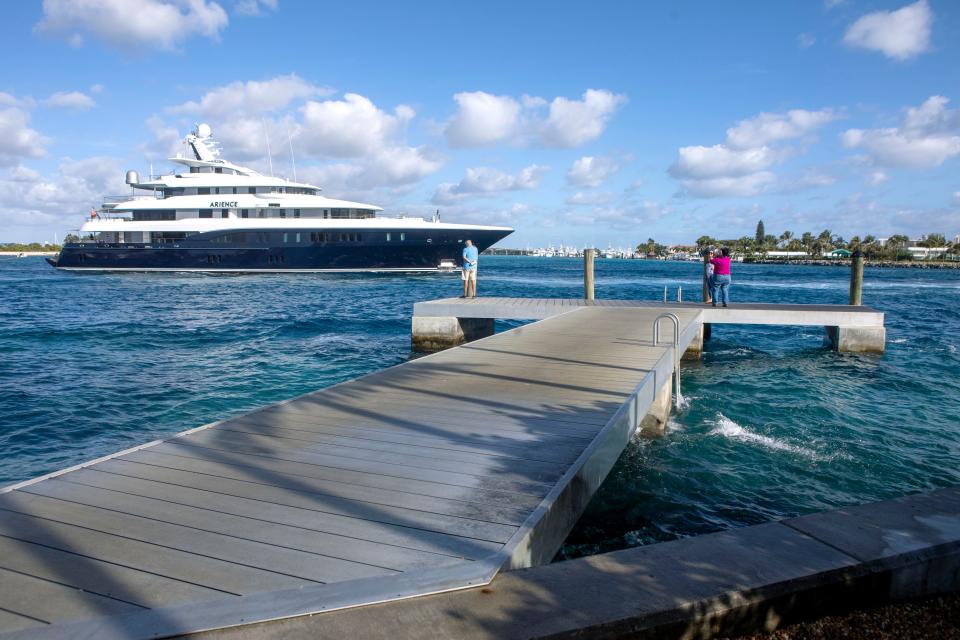
The Sailfish Club of Florida: Its beginnings reach to town’s earliest days
The Sailfish Club of Florida, organized on Feb. 28, 1914, is the oldest continuously operating private club on Palm Beach. The club’s early meetings and gatherings were held at The Breakers Casino. In 1932, the members decided they wanted more privacy and their own docks.
A clubhouse and dock were built on the property where the club sits today along Lake Worth at 1338 N. Lake Way.
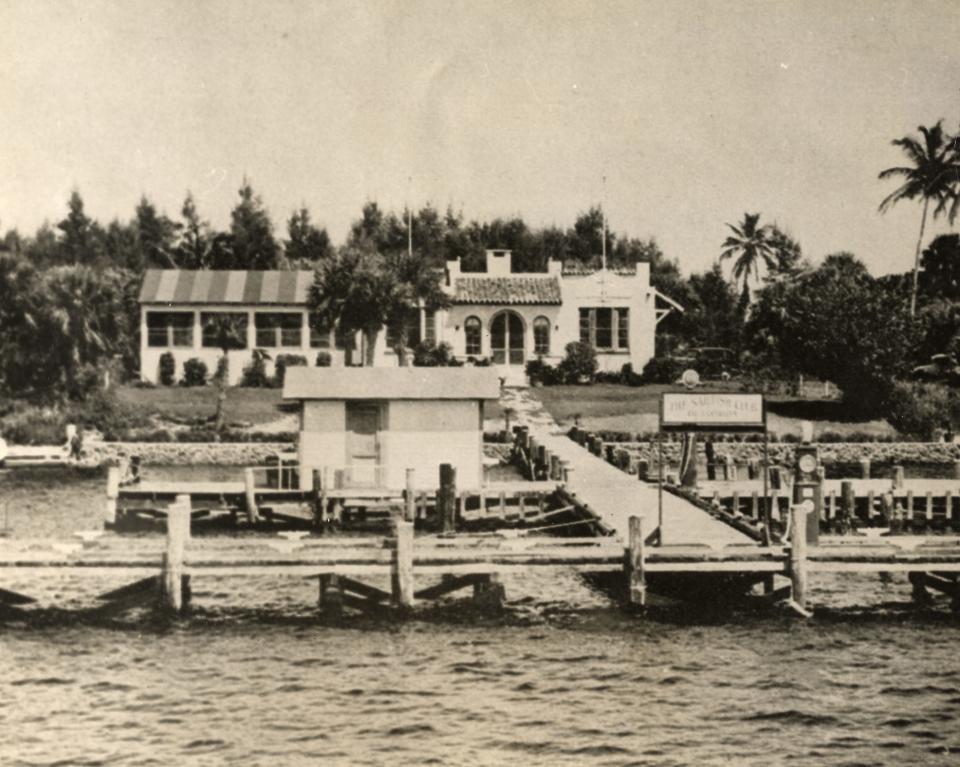
The club survived two world wars and the Great Depression, which saw the demise of many clubs nationwide because of financial hardship.
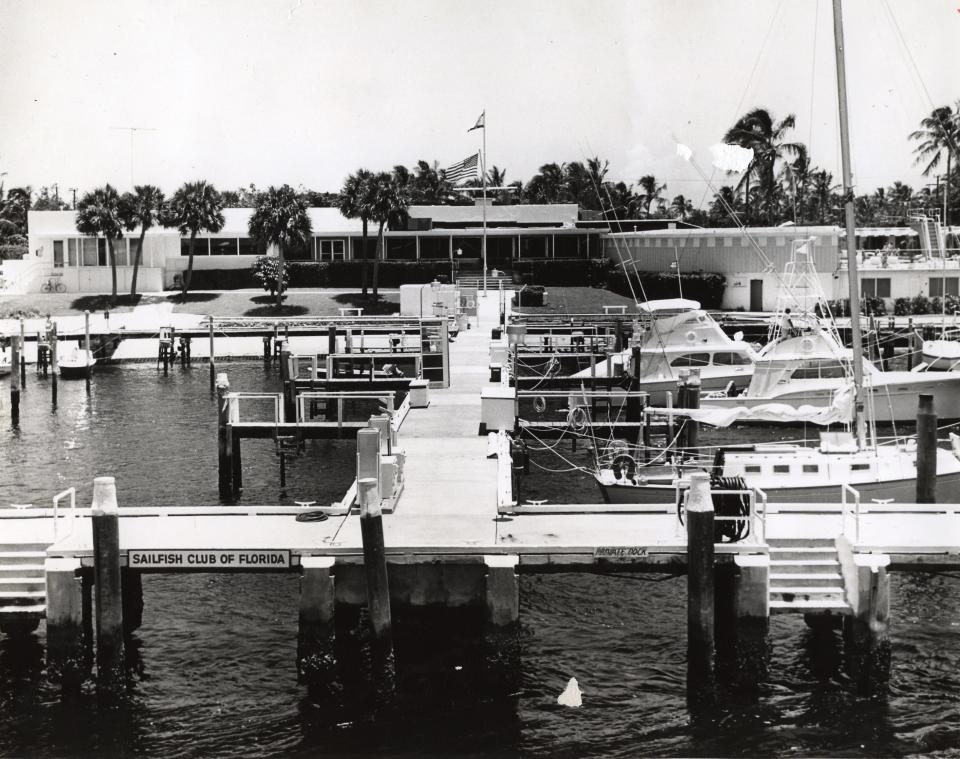
At its new location, the Sailfish Club continued to grow and become one of the premier fishing and boating clubs in Florida. Its most recent extensive renovations were completed in 2019.
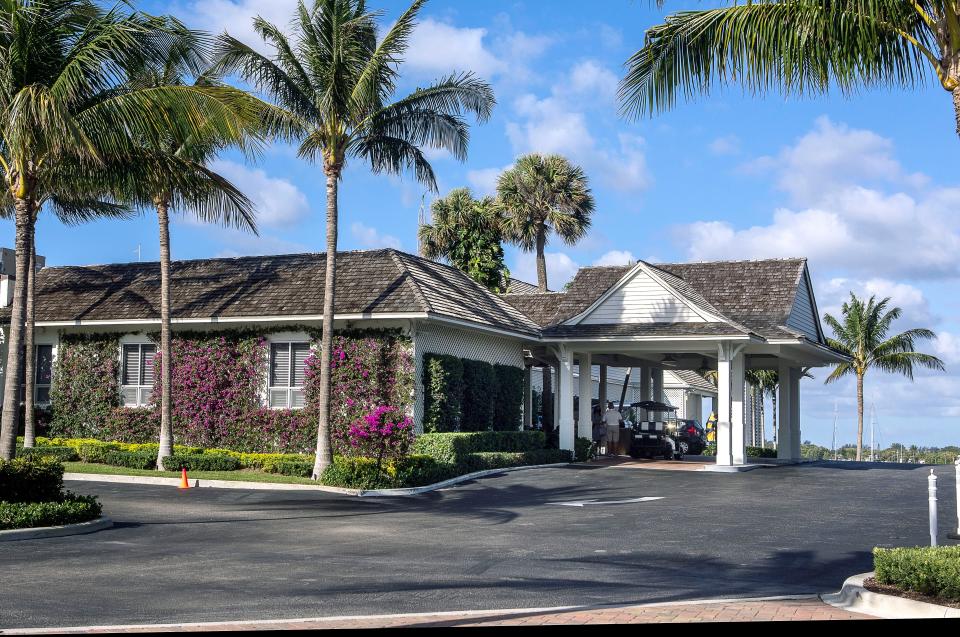
Phipps Estate: Entrance marks site of legendary estate
The Phipps family of steel, land and horseracing fame once owned a third of Palm Beach. The Phippses’ oceanfront stone mansions, Heamaw and the legendary Casa Bendita, one of Addison Mizner’s most celebrated houses, have long been demolished and the oceanfront property subdivided.
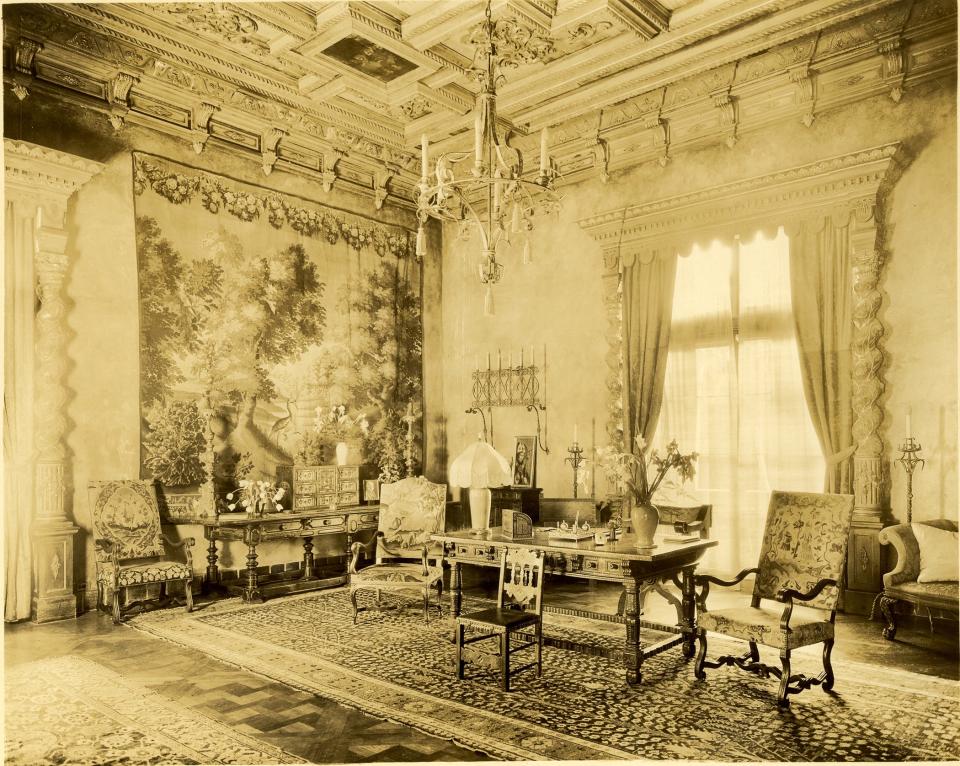
Phipps Estate, a residential development of 20 homes on the North End, is a 19-acre neighborhood developed by Dan Swanson and his wife, Karen, starting in the 1990s. The Swansons ran two streets, Via Tortuga and Via Las Brisas, on either side of the 6-acre estate known as Casa Phippsberger, the home of Susan Phipps Cochran and her husband, Bob Eigelberger.
Its main entrance, a little more than a mile north of Royal Poinciana Way, is off North County Road, with gated entrances also accessing North Lake Way.
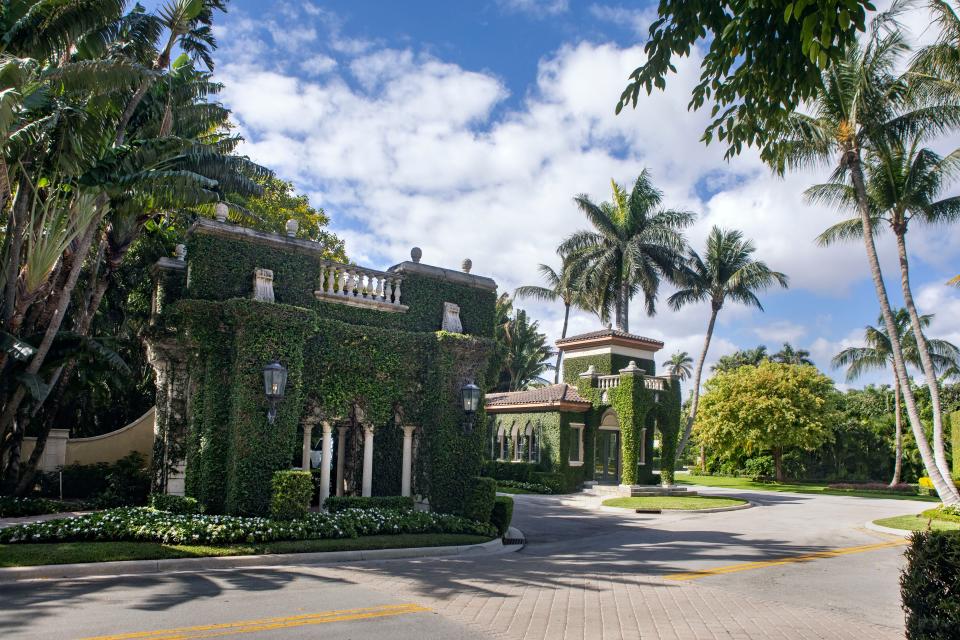
Duck’s Nest: Victorian era home transformed for modern day
Duck’s Nest, Palm Beach’s second-oldest home, and a landmarked estate, 305 Maddock Way, was built by Henry Maddock in 1891 on Lake Worth, and exemplifies the traditions of Palm Beach’s original houses.
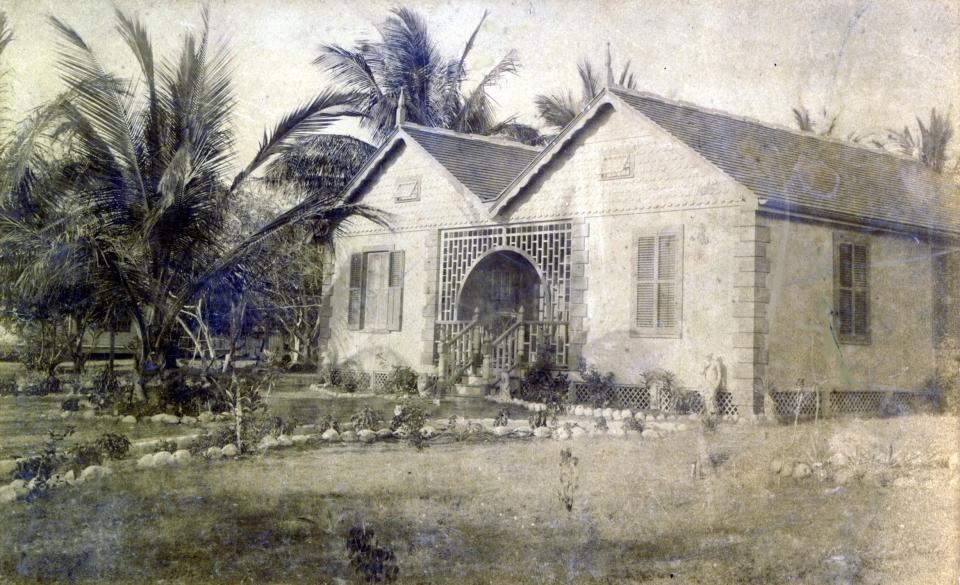
Parts of the wood-frame shingle-style Victorian era house were assembled in New York and brought by barge to Palm Beach, as this was the only means of transportation.
After undergoing a major rehabilitation by its owners, Julie and Brian Simmons, the house received the 2020 Robert I. Ballinger Award, named in honor of the late former chairman of the Landmarks Preservation Commission.
Duck’s Nest can be seen from the Lake Trail.
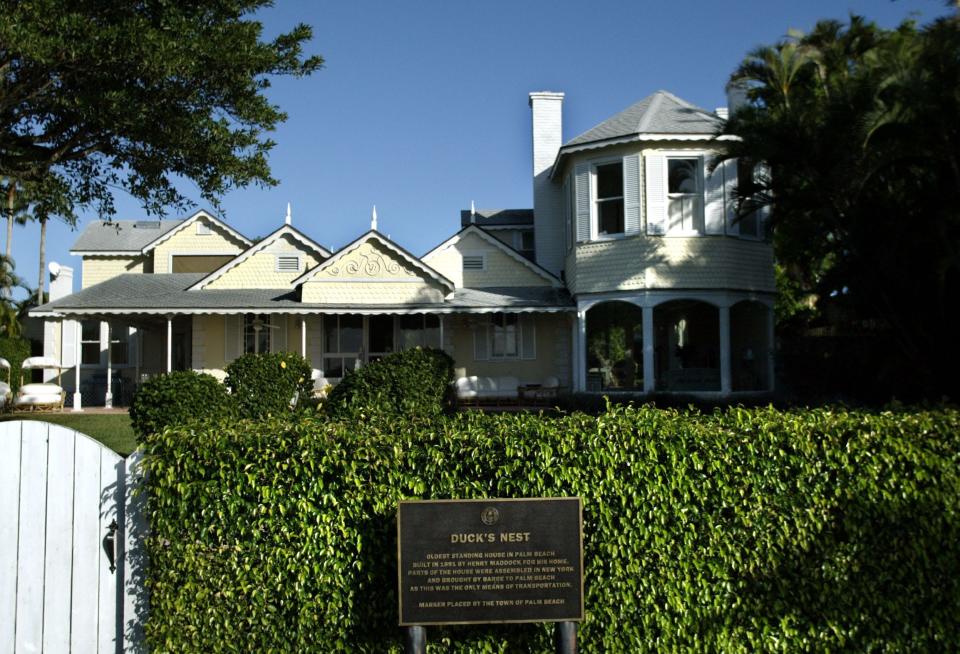
Coral Cut: The ‘cliffs’ of Palm Beach
Visitors to Palm Beach may not expect to encounter Coral Cut, a canyon-like passage with towering cliffs of coral rock that allows travelers to drive on Country Club Road.
The brief stretch connects the east and west sides of the island on the North End.
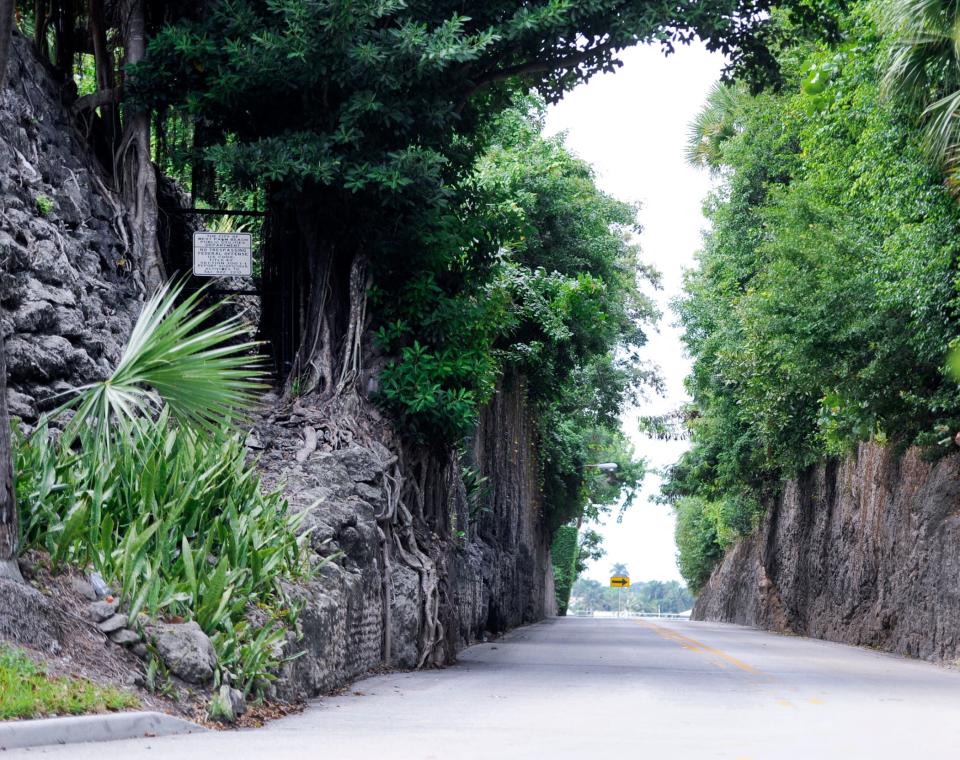
It started out a century ago as a narrow alley just wide enough for bicycle traffic.
Sometimes called the “Witch’s Wall,” the coral cut has given rise to legends. The harrowing hazards are said to include everything from lost souls to crazy prisoners. Tales aside, the coral hill is actually the site of a water pumping station.
St. Edward Catholic Church: A sanctuary in midtown
St. Edward Catholic Church, 144 N. County Road, was established after a Jesuit priest, the Rev. Felix Clarkson, was given permission by the Bishop of St. Augustine to purchase three lots at the corner of North County Road and Sunrise Avenue. The church was completed less than nine months after the start of construction, and Midnight Mass was celebrated Dec. 25, 1926.
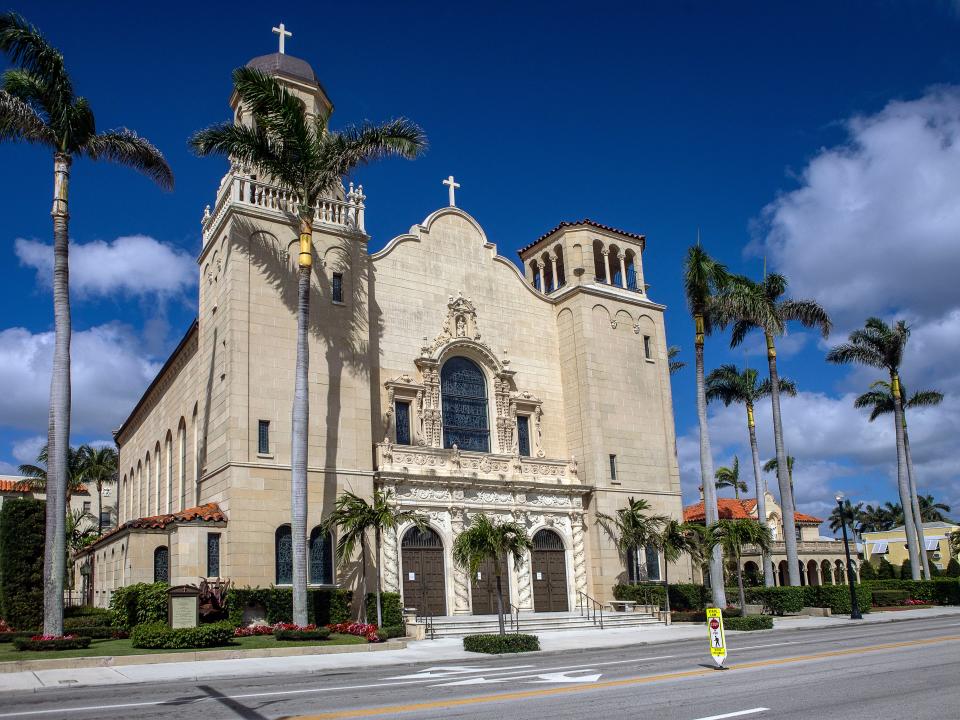
The Spanish Renaissance-style church features two towers and a Spanish tile roof. Three sets of bronze doors open to the vestibule, which is flanked by two chapels. The main Altar of the Sacred Heart, made of Carrara marble, occupies a niche over 40 feet in height, which is painted with a mural of the 12 apostles and surmounted by a depiction of the crucifixion. The stained-glass windows depict the life of the Blessed Mother.
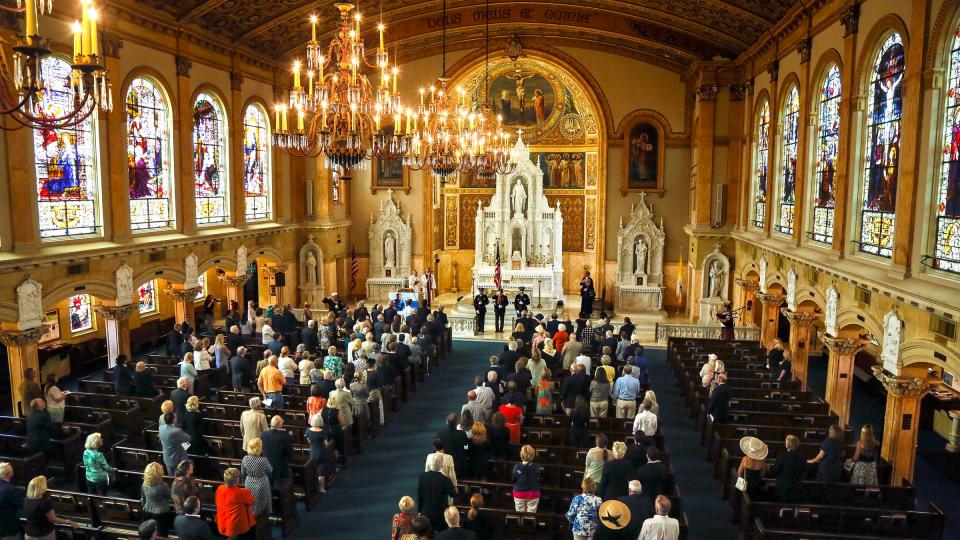
The Breakers: A landmark for 125 years
The 538-room oceanfront’s resort’s history dates to 1896 when oil and railroad magnate Henry Morrison Flagler opened the Palm Beach Inn. It was expanded and renamed The Breakers in 1901.
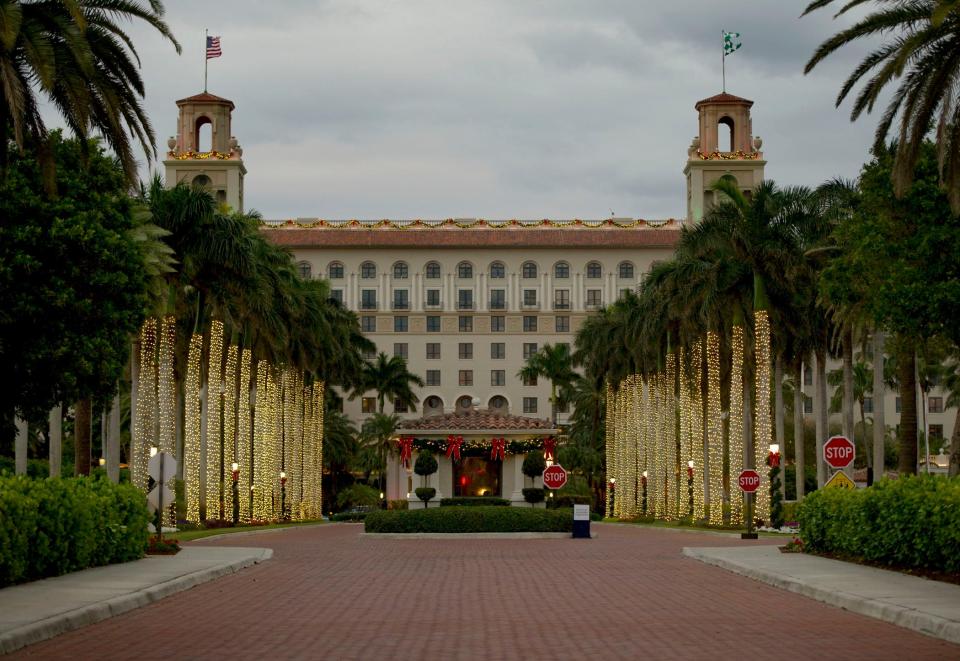
Fires destroyed The Breakers in 1903 and 1925. Its current Italian Renaissance version with its twin Belvedere Towers opened in 1926. The 140-acre resort at 1 S. County Road is owned by the Kenan family, the heirs of Flagler and his wife, Mary Lily Kenan. The Breakers has continued to evolve and reinvent itself, investing an average of $25 million a year in enhancements.
The Episcopal Church of Bethesda-by-the-Sea: From four worshipers to many
In 1889, four communicants gathered on the shores of Lake Worth in the Little Red Schoolhouse to establish an Episcopal mission, which today is known as The Church of Bethesda-by-the-Sea, 141 S. County Road.
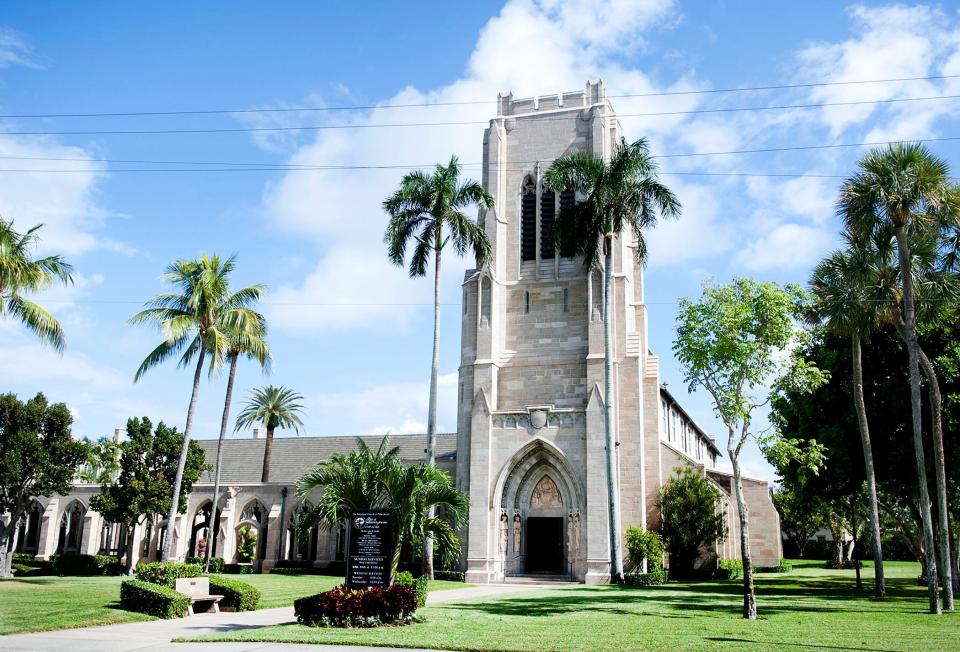
A second structure, slightly north of the first and still extant, was consecrated in 1896 and housed the congregation until 1925. That year, through the vision of Canon James Townsend Russell of the Cathedral Church of St. Peter and St. Paul in Washington, D.C., and rector of Bethesda, the congregation began construction of the current Gothic Revival-style building, which surrounds a courtyard. The church held its first services at its current location on Christmas Day 1926. It’s also known for the peaceful Cluett Memorial Garden on its property.
Whitehall - The Henry Morrison Flagler Museum: The most magnificent home of its time
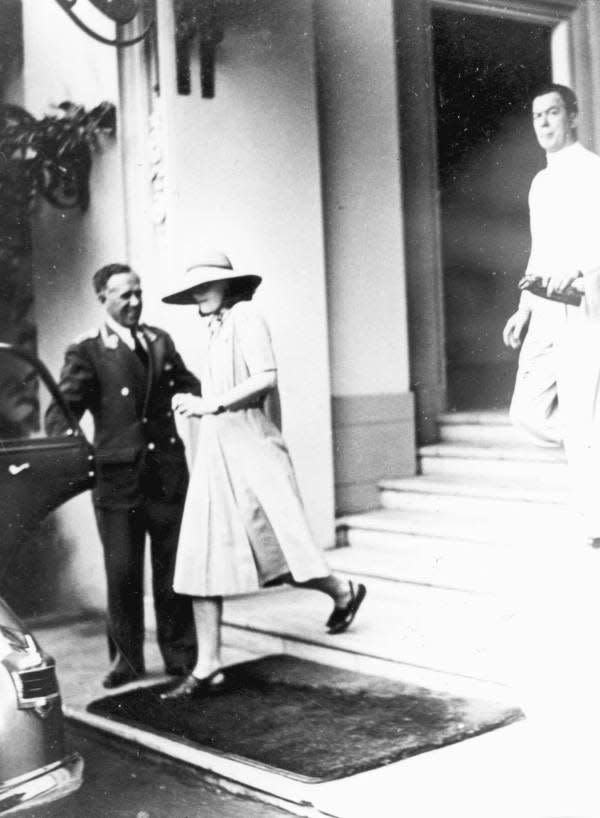
The palatial Whitehall, One Whitehall Way, was built by Henry Morrison Flagler at the end of the 19th century as a wedding gift to his third bride, Mary Lily Kenan.
When it was completed in 1902, the New York Herald proclaimed that Whitehall, Henry Flagler's Gilded Age estate, was "more wonderful than any palace in Europe, grander and more magnificent than any other private dwelling in the world." Today, Whitehall is a National Historic Landmark and is open to the public as the Flagler Museum, offering self-guided tours, changing exhibitions and special programs.
Sea Gull Cottage: The many lives of the town’s oldest home
Sea Gull Cottage, 60 Cocoanut Row, built in 1886 for Robert R. McCormick of Denver, was the finest residence in Palm Beach when Henry Flagler bought it in April 1893. It was Flagler’s home until Whitehall, now a museum, was completed in 1902.
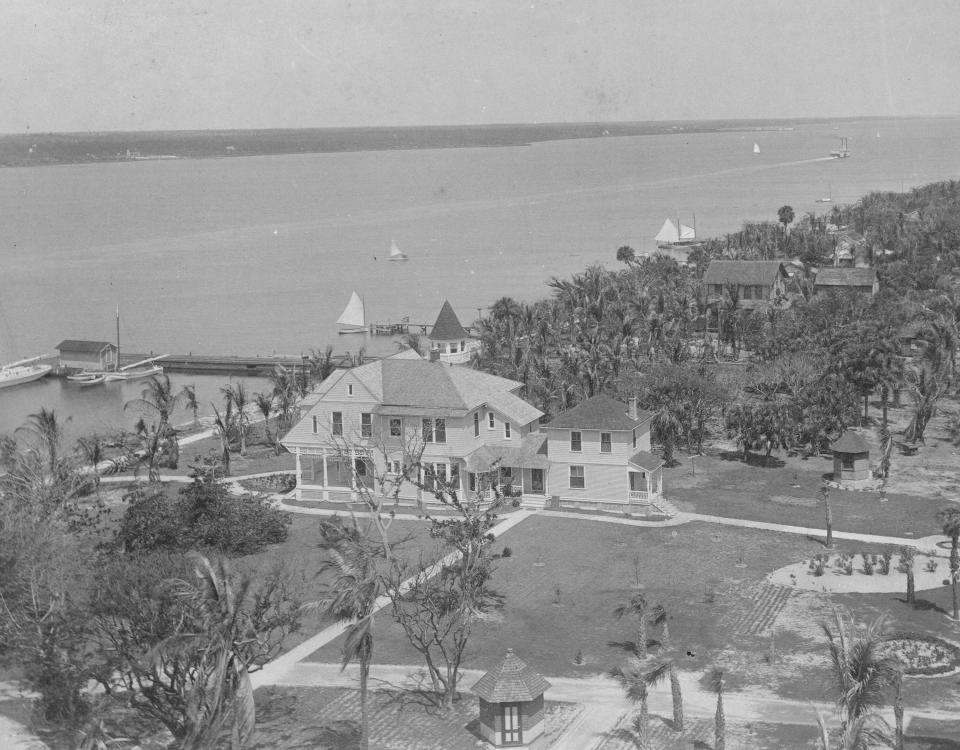
In 1913, it was moved to the ocean side of Palm Beach to become a rental at The Breakers. It was restored in 1984 and moved back to its original location next to the Royal Poinciana Chapel, which owns it.
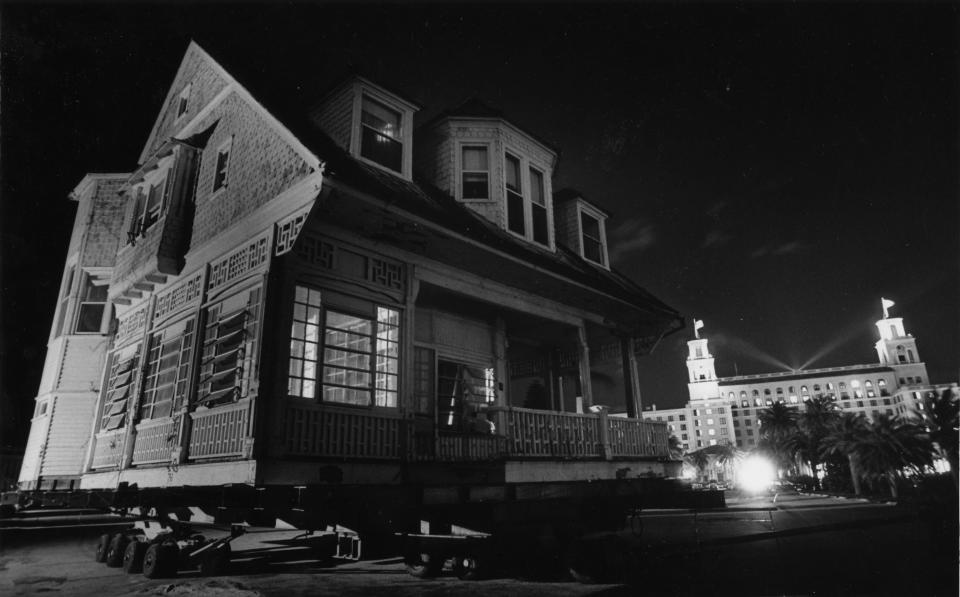
The shingle-style Victorian house underwent a $4.9 million two-year renovation completed in 2010 and represents the type of architecture that was prevalent in Palm Beach before the arrival of architect Addison Mizner. The church uses it for meetings and social events.
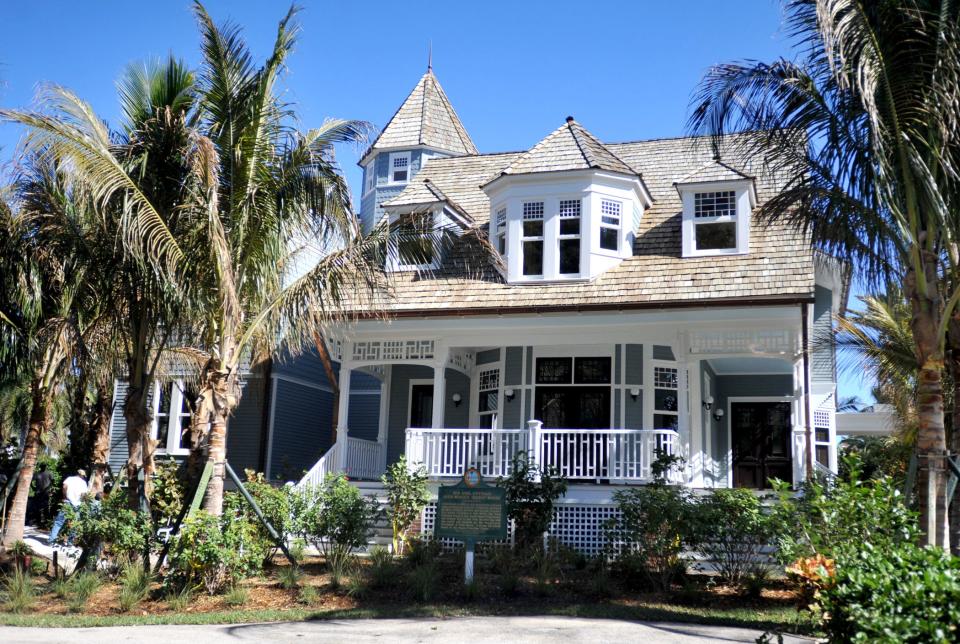
Royal Poinciana Chapel: Tending an interdenominational tradition
The Victorian Gothic-style Royal Poinciana Chapel at 60 Cocoanut Row was designed to complement the Royal Poinciana Hotel, Henry Flagler’s first hotel in Palm Beach.
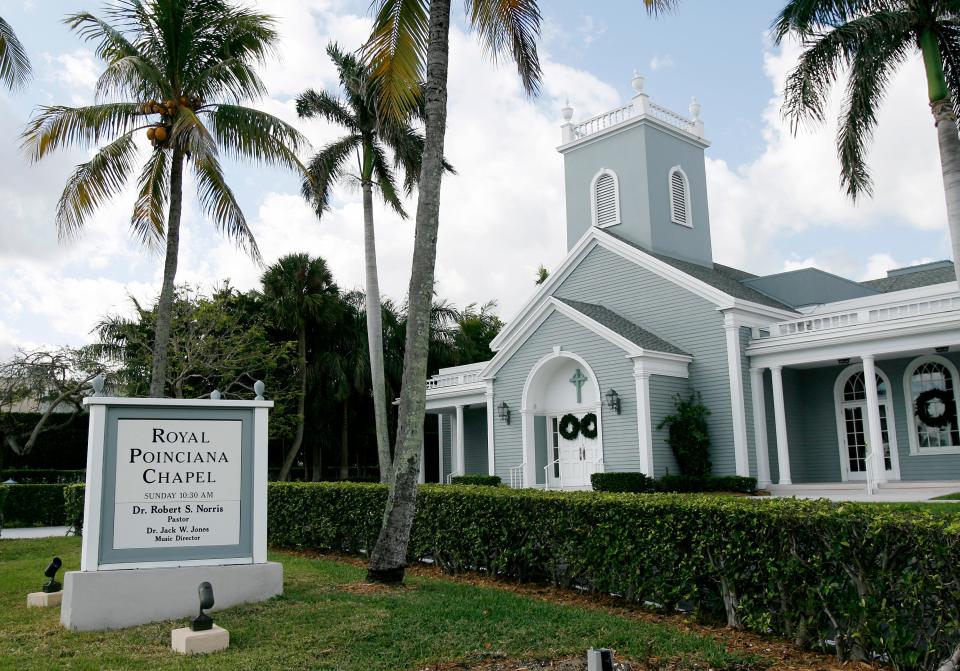
The chapel was built on land donated by Flagler, who wanted a place of worship for the northern guests who came to his hotel.
Construction of the 400-seat interdenominational chapel, supervised by local pioneer George Lainhart of Lainhart and Potter Lumber Co., was completed in 1898. The structure was moved several times, but only within the general area of Whitehall and the Royal Poinciana Hotel grounds.
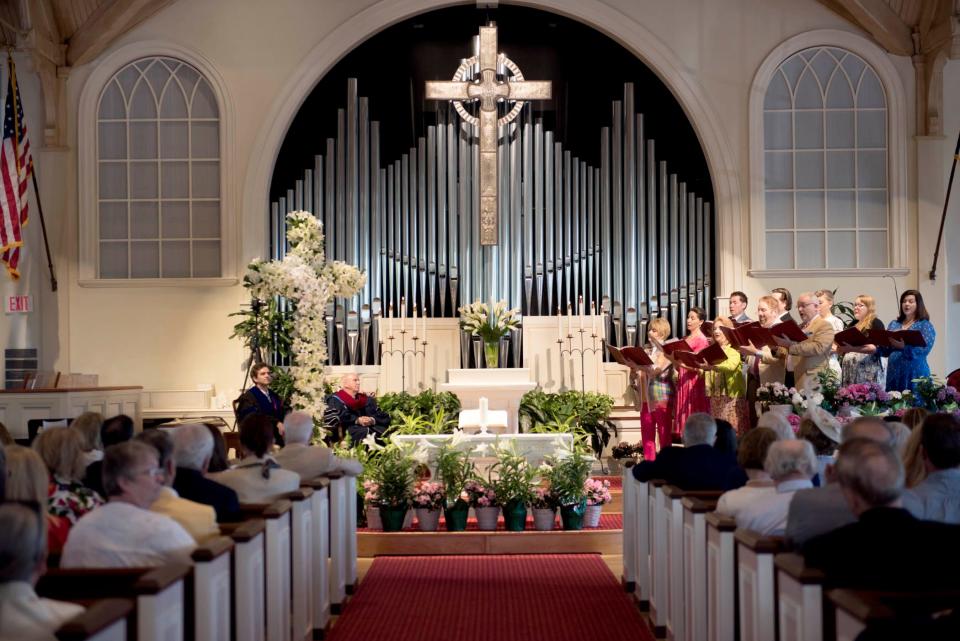
In 1973, a reconstructed chapel was moved to its present location. In 1993, the chapel was once again renovated and a new fellowship hall, office, remanufactured organ and Sunday school facilities were completed.
Bradley Park: The historic gateway to Palm Beach
The 4.5-acre park at 100 Bradley Place, once the site of Colonel E.R. Bradley’s Beach Club and residence, is now a public historic place. Overlooking the Intracoastal Waterway on the north side of Royal Poinciana Way, the park received a complete upgrade in 2017 that included a series of garden rooms.
When Bradley died in 1946, he left the land to the town and requested it become a public park. Now visitors can learn about the area’s history by reading the interpretive panels installed in the Tea House, the only remaining structure from Bradley’s day.
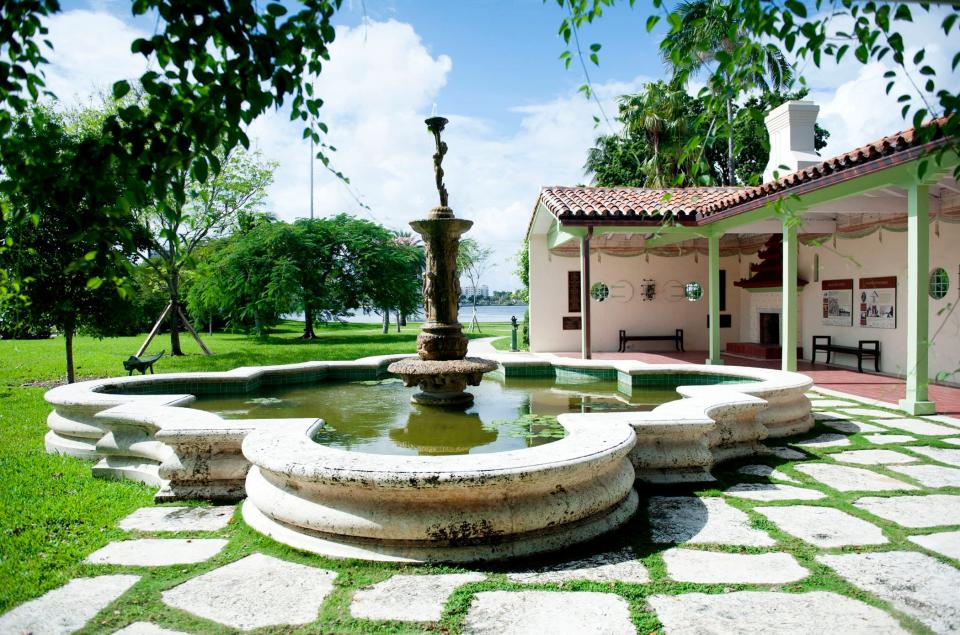
Society of the Four Arts Botanical Garden: The island’s original green how-to
The garden on a three-quarter-acre site at 100 Four Arts Plaza is owned by The Society of the Four Arts and maintained and managed by The Garden Club of Palm Beach. It adjoins the more open Philip Hulitar Sculpture Garden.
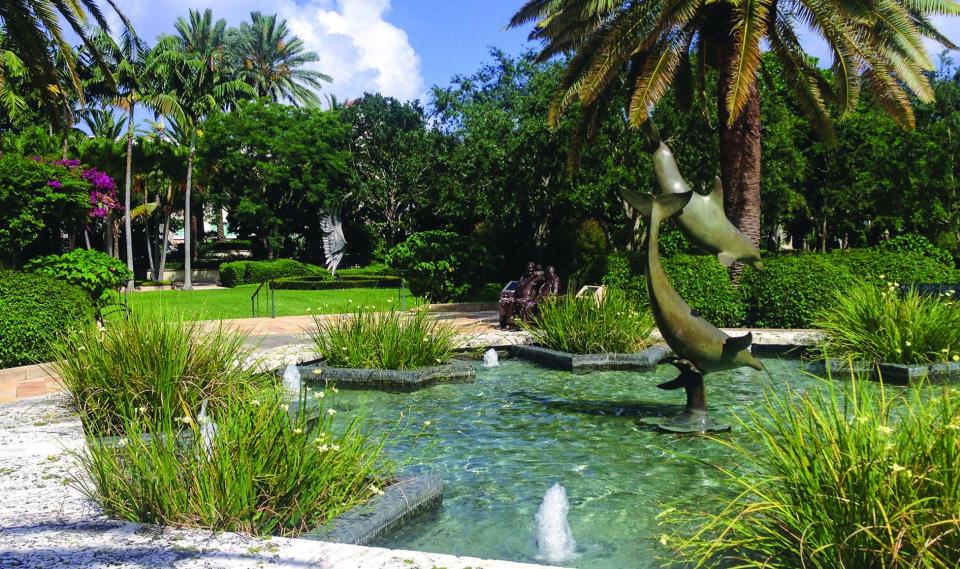
After entering through the ornate wrought iron gates, visitors will find more than 250 types of Florida-friendly plants and trees.
Meandering paths of coquina stone and brick, benches, a fountain and ponds add to the graceful ambiance in a series of themed garden rooms. The garden opened in 1939 with the purpose of demonstrating what grows well in Florida.
Town Hall Square: A Mizner/Volk tour de force
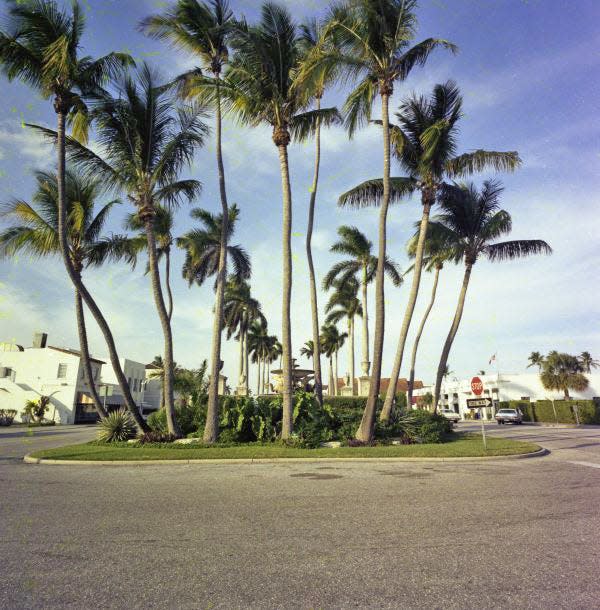
The historic town square includes the Town Hall, 360 S. County Road, Memorial Fountain and neighboring park. The Mission/Spanish Revival-style building was built in 1925 by renowned architects Harvey and Clarke. Originally, the town hall was two different structures. Today’s unified 2 ½ story municipal building is the result of an addition by architect John Volk in 1967. The building, a town landmark, has undergone many renovations over the years and was added to the National Register of Historic Places in 2005.
The Memorial Fountain and park, just north of town hall, designed by architect Addison Mizner, were built in 1929. The fountain features four mythical sea horses, or hippocamps. A restoration was completed in 2017 as part of the greater Town Hall Square renovation. The project was conceived as a way to celebrate Palm Beach’s centennial.
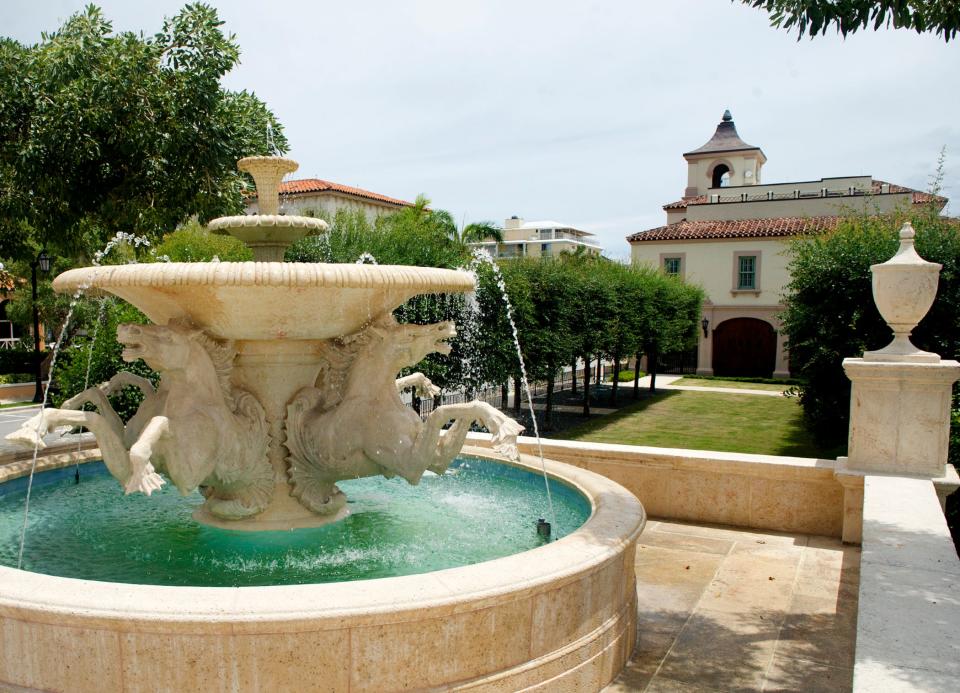
Worth Avenue: Facelift in 2010 refreshed the byway
Worth Avenue, an internationally famous four-block long stretch of high-end shops and restaurants from the ocean to Lake Worth, was named after Brig. Gen. William Jenkins Worth, who commanded federal troops in the Second Seminole War in 1841 and 1842.
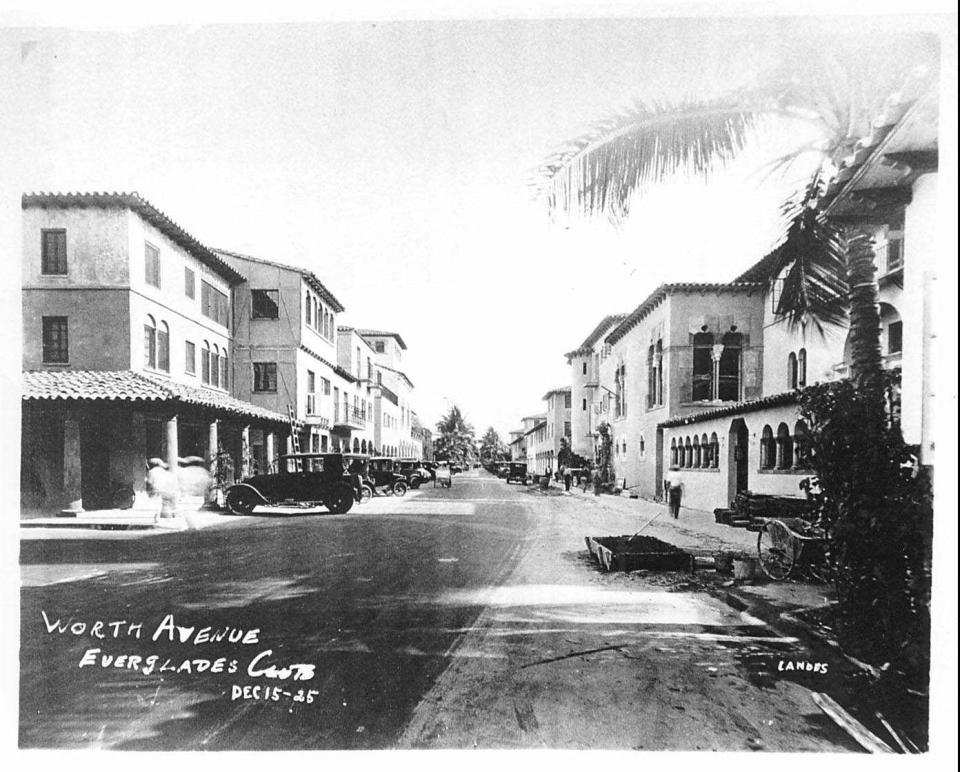
Paris Singer, heir to the sewing machine fortune, founded the Everglades Club and brought Addison Mizner to the resort. Mizner designed and built the club at the western end of Worth Avenue in 1918. By the 1920s, stores had opened on the street.
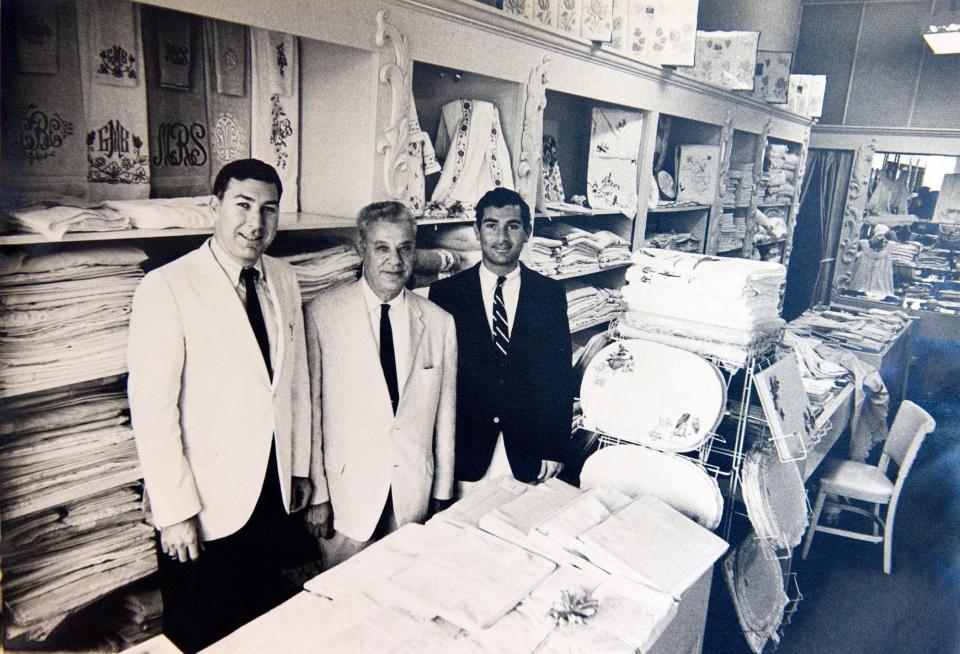
The oldest shop on the Avenue today is Kassatly’s, which opened in 1923.
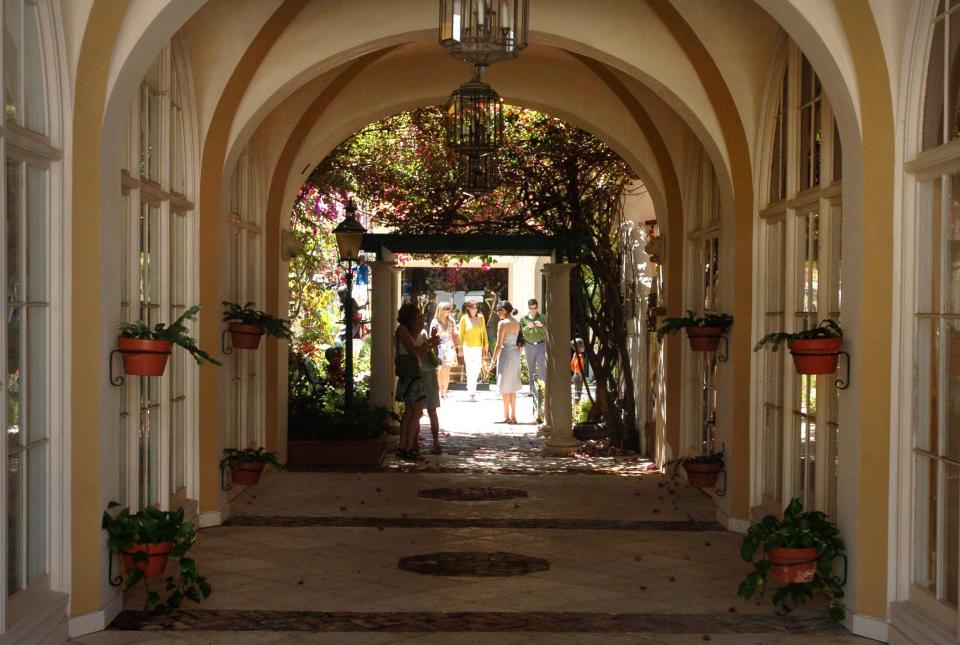
The street’s $15.8 million makeover completed in 2010 included the installation of more than 200 coconut palms, tabby seashell sidewalks, antique-style streetlights, benches, and a new 25-foot clock tower.
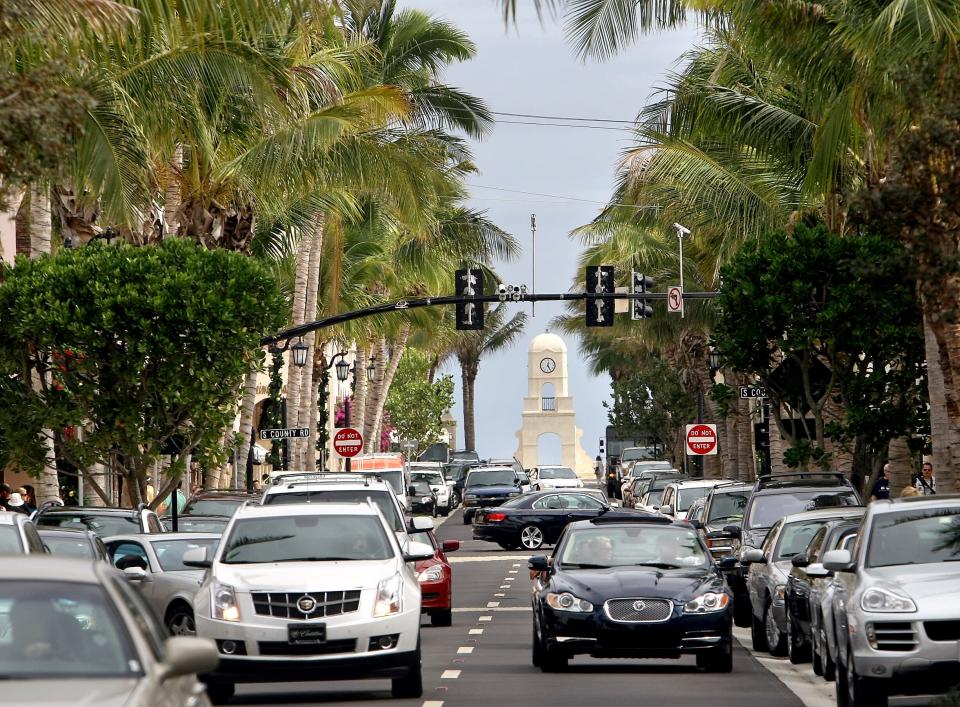
The Everglades Club: A Mizner masterpiece
The private Everglades Club, 356 Worth Avenue., opened in 1919 and is the place where America’s elite gathers in the winter. The building was Mizner’s first creation in the romantic mélange of architectural styles known around the world as “the Palm Beach look.”
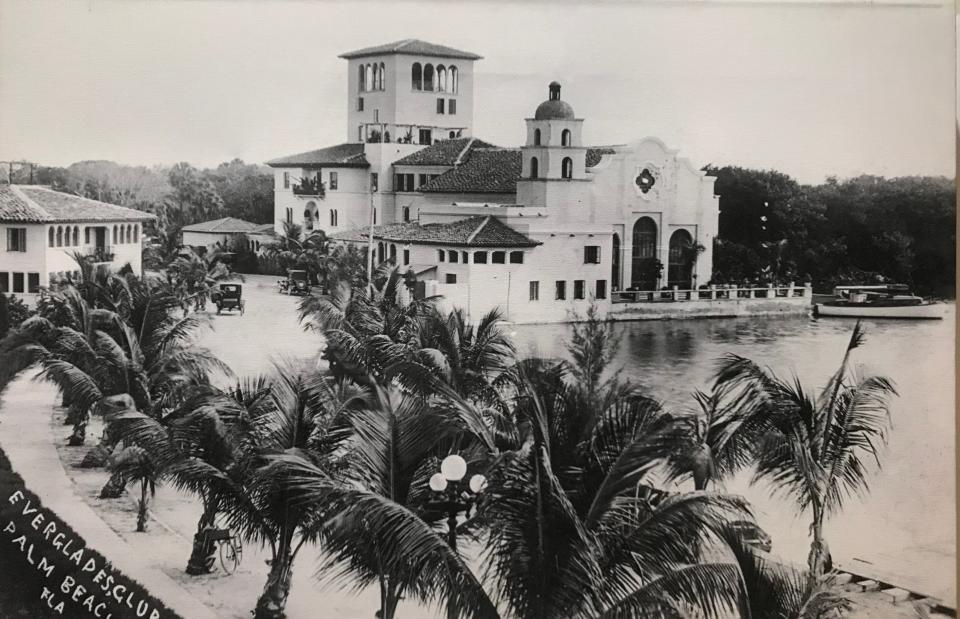
The club, originally planned by Paris Singer to be a temporary military hospital during World War I, was designed in the style of an old Spanish monastery. With its medieval turrets and a blend of Moorish and Spanish architecture throughout the interior, the Everglades Club is considered one of the finest examples of Mizner’s work.
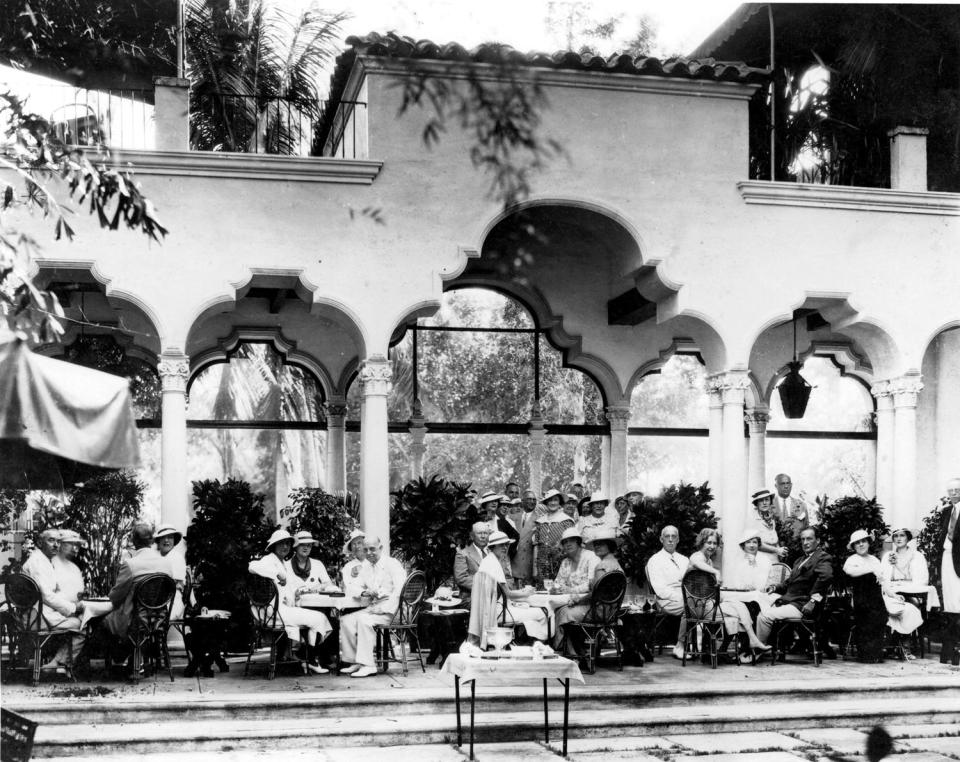
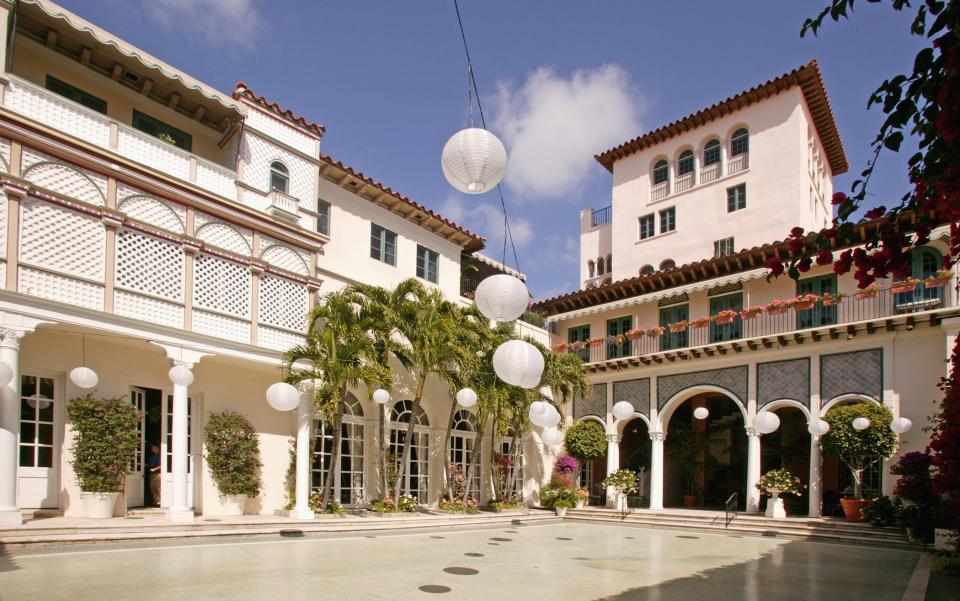
The Little Red Schoolhouse: Living history at Phipps Ocean Park
Founded in 1886, the Little Red Schoolhouse, 2185 S. Ocean Blvd., was the first schoolhouse in southeast Florida. Its first seven scholars were taught by Miss Hattie Gale, the 16-year-old daughter of the Rev. Elbridge Gale, former professor of horticulture at Kansas State Agriculture College, who came to the Lake Worth area to be a minister and horticulture professor.
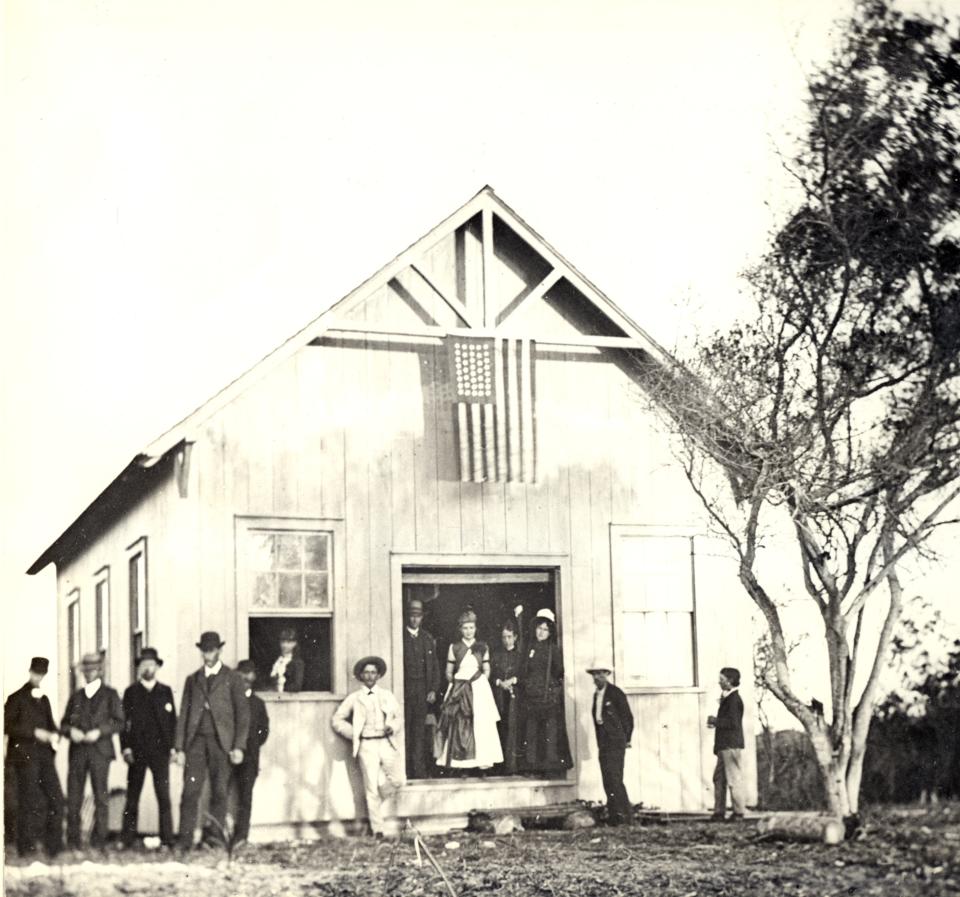
In its original location, approximately one mile north of the Flagler Memorial Bridge,on the Lake Trail, the one-room school served the children of all the families around Lake Worth. The school closed in 1901 and was used as a tool shed on the John S. Phipps property. In 1960, it was moved to Phipps Ocean Park, where it remained unused until the Preservation Foundation of Palm Beach began its “living history” program for children in 1990.
The Barefoot Mailman’s Route: A little imagination can recreate the trek
In the 1880s, it took weeks to deliver a letter between Fort Dallas (today’s Miami) and Jupiter by boat. The solution was to deliver the mail on foot. From 1885 until 1893, the mail was carried more than 136 miles down the coast by a small, rugged group of men.
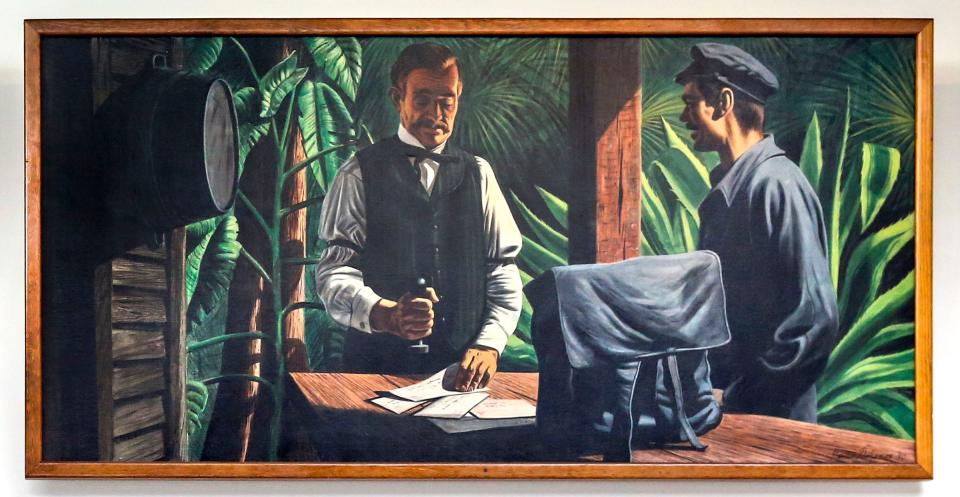
After the publication of Theodore Pratt’s 1943 novel, “The Barefoot Mailman,” they became known as the Barefoot Mailmen. Because there were no roads, the men walked on the hard sand of the beaches as far as they could and made the remainder of the trip in small boats, which they kept tied up at the inlets, rivers and bays. The trip took three days in each direction and included overnight stops at houses of refuge for shipwrecked sailors in Delray Beach, Fort Lauderdale and Miami.
The historical marker in their honor is planted in Boca Raton, but armed with a willingness to shed shoes for an oceanside stroll, an imaginative history lover can relive a moment in time.
This article originally appeared on Palm Beach Daily News: Palm Beach history still present in landmarks all over the island

